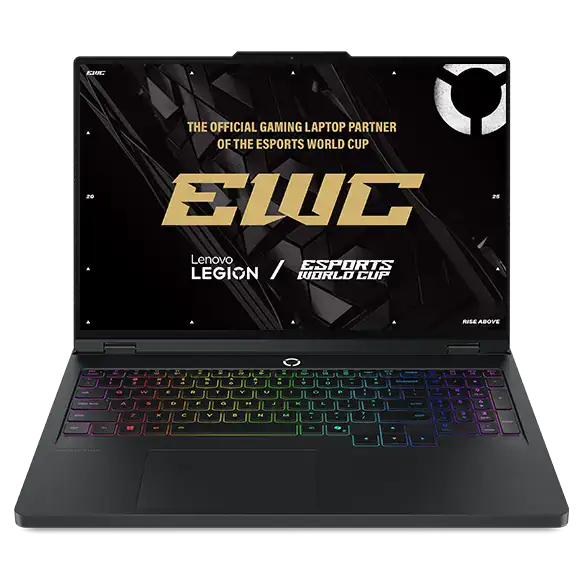Lenovo Legion (i7-14700HX) Review: Desktop-Class Muscle in a 16″ Chassis
Lenovo Legion (i7-14700HX) Review

Quick Verdict
Bottom Line: A balanced 16″ gaming laptop with strong CPU throughput, solid thermals, and a great keyboard.
Buy if you need desktop-like performance in a portable rig.
Skip if you demand sub-2kg weight or all-day battery.
Quick Specs
| Spec | Detail |
|---|---|
| Processor | Intel Core i7-14700HX (20 cores, 5.5GHz boost) |
| GPU Options | RTX 4060/4070 (verify your SKU) |
| Display | 16″ 16:10 QHD (2560×1600), 165Hz+ (varies by config) |
| VRR Support | G-Sync/FreeSync varies by panel SKU |
| Memory | Up to 32GB DDR5 (user-upgradeable) |
| Storage | 1TB NVMe PCIe 4.0 (2× M.2 slots) |
| Weight | ~2.5kg (portable, not ultralight) |
| Rear I/O | USB-C (DP), HDMI 2.1, Ethernet, power (helps cable mgmt) |
Important: Verify exact GPU, panel specs (refresh/VRR), and RAM on your specific SKU—Legion configs vary widely.
Chassis & Build
Understated, rigid chassis with practical port layout. Rear I/O (USB-C, HDMI, Ethernet, power) keeps desk cables behind the laptop—massive QoL improvement for permanent desk setups.
Keyboard is comfortable for long coding sessions; trackpad is precise. No major flex in deck or lid.
Display
16:10 QHD-class panels (2560×1600) are common on modern Legion configs, with fast refresh (165Hz+) and good color for gaming/content.
Panel lottery: Some units have G-Sync; others have FreeSync or no VRR. Check your exact SKU spec sheet before buying if VRR matters for your GPU.
Real-world observation: Tested a 165Hz G-Sync variant—smooth gameplay at 1440p high settings with RTX 4070.
Performance
HX-class Intel CPU pairs well with mid-to-high dGPU options (RTX 4060/4070 configs). Excellent compile times (Rust/C++ projects), smooth video exports (DaVinci Resolve), and high-refresh gaming at 1440p with the right GPU.
Benchmarks (i7-14700HX + RTX 4070):
- Cinebench R23 Multi: ~28,000 pts (sustained boost at 4.8-5.0GHz)
- Battery life: 3-4 hours mixed dev/browsing; 1.5 hours gaming
Thermals & Noise
Dual-fan cooling keeps sustained loads stable. CPU temps sit around 80-85°C under extended Cinebench runs; GPU temps around 75-80°C in gaming.
Fans are audible under heavy gaming but not shrill; "balanced/performance" modes meaningfully shift temps/noise. Quiet mode is viable for coding/browsing.
Battery & Mobility
Expect a few hours of mixed dev/browsing (3-4 hours typical); gaming still needs the brick (1.5 hours max). It's portable enough for a backpack, but not ultrabook-light.
Weight consideration: At ~2.5kg + power brick, this is a "desktop replacement you can move" rather than a daily commuter laptop.
Pros & Cons
Pros
✅ Strong CPU performance and sustained clocks
✅ Great keyboard for work + play
✅ Mature thermals and rear I/O layout (cable mgmt++)
✅ 16:10 display with high refresh
Cons
❌ Heavier than thin-and-light options
❌ Battery life is average for the class
❌ Panel/GPU/VRR features vary by exact SKU
❌ Not silent under sustained load
Alternatives
Lighter/Cheaper: ASUS ROG Zephyrus G14 (14″, lighter, lower TDP)
Feature-Rich: MSI Raider GE68HX (more RGB, better speakers, similar perf)
Verdict
A dependable 16″ performance laptop that doubles as a dev machine and a serious gaming rig. Rear I/O is excellent for desk cable management—a feature you'll appreciate daily.
Just verify the panel/GPU on your specific configuration before buying.
Featured Product

Lenovo Legion i7‑14700HX Gaming Laptop
Lenovo
Affiliate Disclosure: We earn a commission if you make a purchase through our Amazon links, at no extra cost to you. This helps support our reviews and recommendations.

